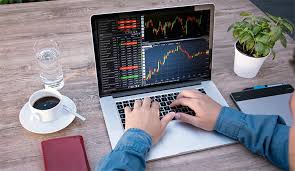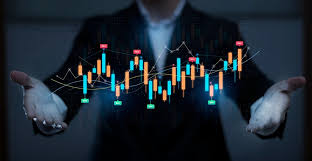
In recent years, the forex market has evolved dramatically, driven by technological advancements and the demand for more efficient trading solutions. One of the most significant developments in this arena is the advent of forex software trading. As more traders seek to optimize their strategies and maximize their profitability, understanding the role of software in forex trading has become essential. forex software trading Trading Uganda serves as an excellent resource for traders looking to enhance their skills and knowledge in this field.
The forex market, also known as the foreign exchange market, is the largest financial market in the world, with an estimated daily trading volume exceeding $6 trillion. This immense scale presents unique challenges for traders, making it essential to have the right tools and software to navigate the complexities of currency trading. Forex software trading encompasses a variety of applications and tools designed to assist traders in executing trades more effectively, analyzing market trends, and managing risk.
Types of Forex Trading Software
Forex trading software can be broadly categorized into several types, each serving a specific purpose in the trading process. Some of the most common types include:
- Trading Platforms: These are the main software applications that traders use to execute their trades. Popular trading platforms include MetaTrader 4 (MT4), MetaTrader 5 (MT5), and cTrader. These platforms provide traders with the tools needed to analyze market conditions, place orders, and manage their trading accounts.
- Automated Trading Systems: Also known as trading robots or Expert Advisors (EAs), these systems automate the trading process by executing trades based on pre-defined criteria. They can help traders take emotion out of trading and capitalize on market opportunities around the clock.
- Charting Software: This type of software provides sophisticated charting capabilities that allow traders to conduct technical analysis. Charting software can offer a wide range of indicators, drawing tools, and customizations to help traders spot trends and reversals.
- Risk Management Tools: These tools help traders assess their risk exposure and manage their capital effectively. Features may include stop-loss orders, take-profit levels, and portfolio analysis tools.
- News Aggregators: Staying informed about economic events and news is crucial in forex trading. News aggregator software compiles information from various sources, providing traders with timely updates and insights into market-moving events.
The Benefits of Using Forex Trading Software
The integration of software technologies into forex trading offers numerous advantages, including:

- Increased Efficiency: Automation significantly reduces the time and effort required to monitor the markets and execute trades. Traders can set their systems to operate autonomously for extended periods, which is particularly beneficial for those with full-time jobs or other commitments.
- Enhanced Analytical Capabilities: Trading software provides access to powerful analytical tools that can help traders make informed decisions. Advanced algorithms can analyze vast amounts of data and identify trends that might be difficult to recognize manually.
- Emotionless Trading: One of the biggest challenges traders face is managing their emotions during high-pressure situations. Automated trading systems can execute trades based on logic and predefined criteria, eliminating emotional decision-making.
- 24/7 Trading Opportunities: Forex markets are open 24 hours a day, five days a week. With automated systems in place, traders can take advantage of opportunities in different time zones without being available at all hours.
- Improved Risk Management: Forex trading software often comes with built-in risk management tools that help traders protect their capital. This is crucial in the volatile forex market, where rapid price fluctuations can lead to significant losses.
Challenges and Considerations
While forex trading software offers many benefits, it is not without its challenges and potential drawbacks. These include:
- Technical Issues: Reliance on software means that traders must be prepared for potential technical glitches, including system outages, internet connectivity issues, and software bugs. Such problems can lead to significant losses if not managed properly.
- Over-Optimization: Many traders fall into the trap of over-optimizing their automated systems based on historical data. While this may yield strong backtest results, it can lead to poor performance in real market conditions.
- Market Adaptability: The forex market is constantly evolving, and automated trading systems may struggle to adapt to changing conditions. Traders must remain vigilant and periodically review and adjust their systems.
- Costs: Some advanced trading software and tools come with substantial costs, which can eat into a trader’s profits, especially for those with smaller accounts.
- Data Privacy and Security: With the increasing reliance on software for trading, ensuring data security and protecting against cyber threats becomes paramount. Traders must choose reputable software providers and be cautious about sharing sensitive information.
Choosing the Right Forex Trading Software
Selecting the right forex trading software is crucial for success. Here are some important factors to consider:
- User-Friendliness: The software should have an intuitive interface that allows traders to navigate easily and access the tools they need without a steep learning curve.
- Compatibility: Ensure that the software is compatible with your operating system and devices. Some platforms may also offer mobile apps for trading on the go.
- Customer Support: A responsive customer support team can make a significant difference, especially if you encounter technical issues or have questions about using the software.
- Community and Resources: A strong user community and available educational resources can enhance your trading experience and enable you to learn from others.
- Cost: Evaluate the pricing structure of the software and what it includes. Some platforms may charge commissions, while others offer subscription models.
Conclusion
In conclusion, forex software trading has fundamentally transformed the way traders interact with the foreign exchange markets. With the right tools, traders can increase efficiency, automate processes, and improve their overall trading strategies. However, it’s essential to recognize the challenges associated with technology and to choose the right software that aligns with individual trading styles and goals. As the forex market continues to evolve, staying informed about new technologies and adapting to changing conditions will be key to successful trading in the years to come.
